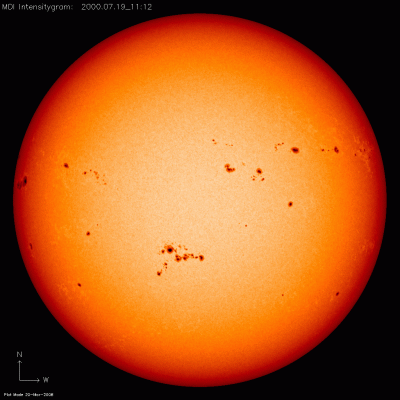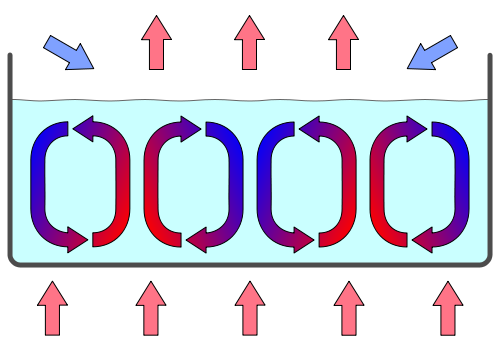Sunspots

Credit: NASA/SOHO
The surface of the Sun that we see is called the photosphere. The dark patches on the surface are called sunspots and are cooler than the rest of the surface. Whilst the photosphere has a temperature of around 6000 °C, sunspots are between 3000 °C and 4000 °C.
Sunspots do not stay in the same place, they move across the surface of the Sun. They also change in size expanding and shrinking. Large sunspots can grow up to 50,000 km in diameter. They appear in pairs with one a magnetic north pole and the other a magnetic south pole. Magnetic field lines come out of the surface of the Sun through one sunspot, and go back in through the other. The strong magnetic field around the sunspots stops heat being moved by convection. Convection moves heat from deeper inside the Sun to the surface. The lack of convection which makes them cooler than the rest of the surface.
Solar flares are connected to sunspot regions.

Credit: I, Eyrian
Why not investigate the activity on the Sun's surface? Our Sunspots Workshop uses data to look at the solar cycle and make predictions about its future activity.

